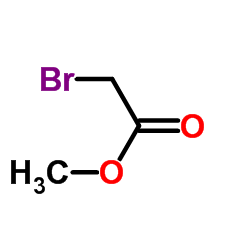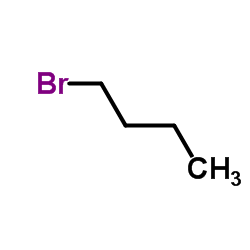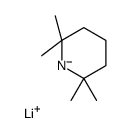Lithium bis(trimethylsilyl)amide

Lithium bis(trimethylsilyl)amide structure
|
Common Name | Lithium bis(trimethylsilyl)amide | ||
|---|---|---|---|---|
| CAS Number | 4039-32-1 | Molecular Weight | 167.326 | |
| Density | 0.891 g/mL at 25 °C | Boiling Point | 55-56 °C | |
| Molecular Formula | C6H18LiNSi2 | Melting Point | 73°C | |
| MSDS | Chinese | Flash Point | 48 °F | |
| Symbol |


GHS02, GHS05 |
Signal Word | Danger | |
| Name | Lithium bis(trimethylsilyl)amide |
|---|---|
| Synonym | More Synonyms |
| Density | 0.891 g/mL at 25 °C |
|---|---|
| Boiling Point | 55-56 °C |
| Melting Point | 73°C |
| Molecular Formula | C6H18LiNSi2 |
| Molecular Weight | 167.326 |
| Flash Point | 48 °F |
| Exact Mass | 167.113785 |
| PSA | 3.24000 |
| LogP | 2.42250 |
| Index of Refraction | n20/D 1.425(lit.) |
| Storage condition | below 5° C |
| Water Solubility | hydrolysis |
| Symbol |


GHS02, GHS05 |
|---|---|
| Signal Word | Danger |
| Hazard Statements | H225-H314 |
| Supplemental HS | May form explosive peroxides., Reacts violently with water. |
| Precautionary Statements | P210-P280-P305 + P351 + P338-P310 |
| Hazard Codes | F:Flammable;C:Corrosive;N:Dangerousfortheenvironment; |
| Risk Phrases | R11;R20;R35;R51/53;R65;R67 |
| Safety Phrases | S9-S16-S26-S29-S33-S36/37/39-S45-S61-S62-S57-S43 |
| RIDADR | UN 2925 4.1/PG 2 |
| WGK Germany | 3 |
| Packaging Group | II |
| Hazard Class | 4.3 |
| HS Code | 2931900090 |
| Precursor 9 | |
|---|---|
| DownStream 8 | |
| HS Code | 2931900090 |
|---|---|
| Summary | 2931900090. other organo-inorganic compounds. VAT:17.0%. Tax rebate rate:13.0%. Supervision conditions:AB(certificate of inspection for goods inward,certificate of inspection for goods outward). MFN tariff:6.5%. General tariff:30.0% |
|
Design, synthesis and biological evaluation of small molecules as potent glucosidase inhibitors.
Eur. J. Med. Chem. 100 , 188-96, (2015) Herein we have reported design, synthesis and in vitro biological evaluation of a library of bicyclic lactams that led to the discovery of compounds 6 and 7 as a novel class of α-glucosidase inhibitor... |
|
|
Effect of concentration of trimethylchlorosilane (TMCS) and hexamethyldisilazane (HMDZ) silylating agents on surface free energy of silica aerogels.
J. Colloid. Interface Sci. 356(1) , 298-302, (2011) The surface free energy of a solid determines its surface and interfacial behavior in processes like wetting and adhesion which is crucial for silica aerogels in case of organic liquid absorption and ... |
|
|
Independent Composition and Size Control for Highly Luminescent Indium-Rich Silver Indium Selenide Nanocrystals.
ACS Nano 9 , 11134-42, (2015) Ternary I-III-VI nanocrystals, such as silver indium selenide (AISe), are candidates to replace cadmium- and lead-based chalcogenide nanocrystals as efficient emitters in the visible and near IR, but,... |
| Lithium 1,1,1,3,3,3-hexamethyldisilazan-2-ide |
| Lithium hexamethyldisilazide |
| EINECS 223-725-6 |
| LITHIUM, (BIS(TRIMETHYLSILYL)AMINO)- |
| MFCD00008261 |
| Hexamethyldisilazane lithium salt |
| Lithium, [bis(trimethylsilyl)amino]- |
| Silanamine, 1,1,1-trimethyl-N-(trimethylsilyl)-, lithium salt (1:1) |
| Lithium bis(trimethylsilyl)amide |
| Lithium bis(trimet |
| lithium,bis(trimethylsilyl)azanide |
 CAS#:999-97-3
CAS#:999-97-3 CAS#:109-72-8
CAS#:109-72-8 CAS#:96-32-2
CAS#:96-32-2 CAS#:52764-24-6
CAS#:52764-24-6 CAS#:109-65-9
CAS#:109-65-9![[BIS(TRIMETHYLSILYL)]-AMINO(TRIMETHYLSILYL-IMINO)PHOSPHANE Structure](https://image.chemsrc.com/caspic/491/50732-21-3.png) CAS#:50732-21-3
CAS#:50732-21-3 CAS#:38227-87-1
CAS#:38227-87-1 CAS#:72525-60-1
CAS#:72525-60-1 CAS#:881-04-9
CAS#:881-04-9 CAS#:33454-82-9
CAS#:33454-82-9 CAS#:45695-56-5
CAS#:45695-56-5 CAS#:57075-81-7
CAS#:57075-81-7![[(Difluoromethyl)thio]benzene structure](https://image.chemsrc.com/caspic/214/1535-67-7.png) CAS#:1535-67-7
CAS#:1535-67-7![[bis(trimethylsilyl)amino]sulfanylbenzene structure](https://image.chemsrc.com/caspic/130/17745-52-7.png) CAS#:17745-52-7
CAS#:17745-52-7 CAS#:456-56-4
CAS#:456-56-4 CAS#:18243-89-5
CAS#:18243-89-5
